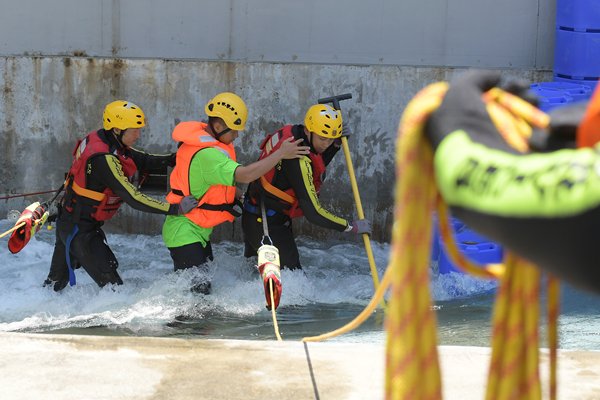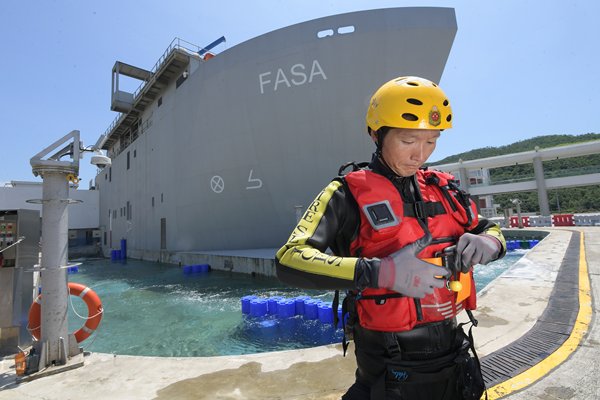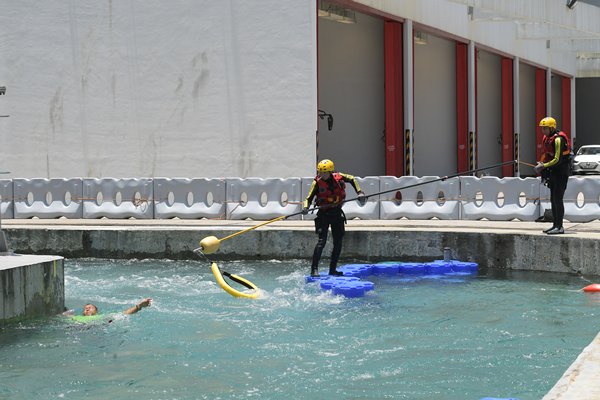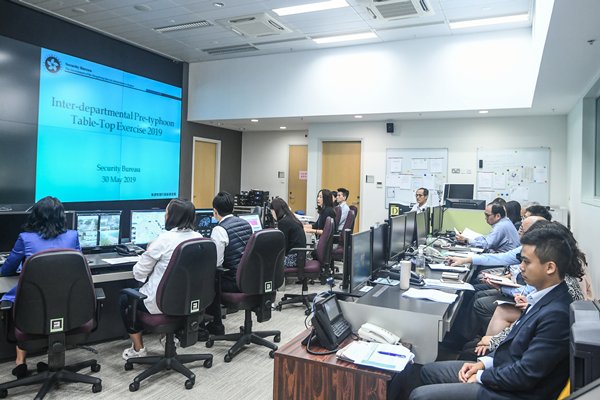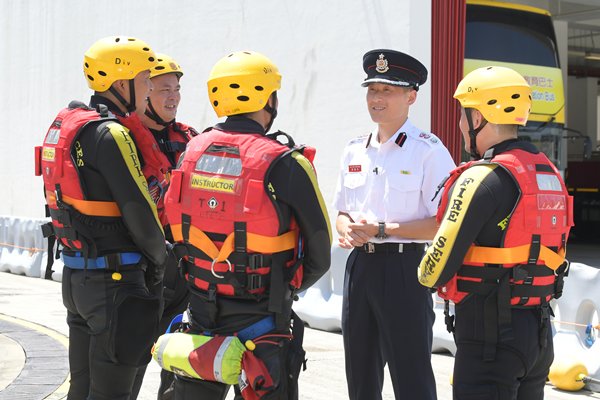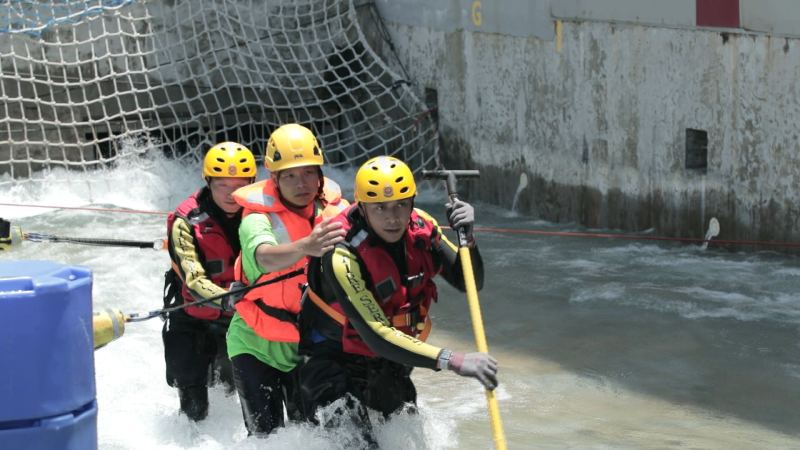FSD ready for the storm
Super typhoon Mangkhut was the fifth tropical cyclone hitting Hong Kong last year. It injured over 400 people, caused road blockages and destroyed more than 60,000 trees.
The Fire Services Department deployed about 150 members from three specialised units to respond to more than 1,200 special service calls during the storm’s passage.
To ready itself for this year’s typhoon season, the department has enhanced training, especially in swift water rescue skills, for frontline members.
It also joined an inter-departmental tabletop exercise held by the Security Bureau in May to test the Government’s preparedness, response and recovery capabilities for typhoons.
Fire Services Department Deputy Chief Officer Derek Armstrong Chan said the department has strengthened its training programme and members’ knowledge of working under the influence of a typhoon.
“This includes organising and co-organising lectures, organising and participating in drills and providing more relevant training to our frontline members.
“This will not only enhance their operational competence but also their safety when carrying out rescue operations in extreme weather.”
Life-saving techniques
The department has promoted swift water rescue training since 2010 to boost frontline members’ rescuing skills. These members saved about 160 residents in Aberdeen and Tai O during Mangkhut’s passage.
Mr Chan said: “For long-term development of our swift water rescue techniques, a total of six divers in our diving unit were sent to the UK in September 2016, where they had completed a four-week training course.
“Having obtained the internationally recognised qualifications, they are now providing relevant training to our frontline members.”
To face the threat of increasingly extreme weather, the department introduced tools and equipment to enhance the efficiency and safety of its members.
These include a personal flotation device that gives rescuers more flexibility than ordinary life jackets.
Rescuers can also use reach and rescue poles to quickly extend life-saving equipment to victims in the water and reduce their risk of drowning.
Tropical storms usually affect Hong Kong from May to November and can cause flooding in low-lying areas. The department reminded residents to be aware of flooding black spots.
